A common request I receive mostly from people of Asian descent is that they want to have double eyelid surgery, but they prefer to have the non-incisional double eyelid procedure. In my experience, this comes mostly from people thinking that the non-incisional procedure is a less involved, or minimally invasive procedure, or even not a surgical procedure at all. In reality, the non-incisional approach to Asian eyelid surgery, or double eyelid surgery is still invasive, and it is still a surgical procedure. When it comes to double eyelid surgery, there are several factors in choosing the approach, which I will explain.
As a specialist in cosmetic eyelid surgery, I regularly perform primary eyelid surgery, and revision surgery to repair the work originally done by other doctors for hooded upper eyelids, eye bags, eyelid ptosis, and repairing issues from past surgery like eyelid retraction, and ectropion. I also perform eyelid surgery and other procedures for ethnic groups with unique needs, such as for patients with darker skin who are more prone to scarring, and Asian double eyelid surgery.
Double Eyelid Surgery Before and After
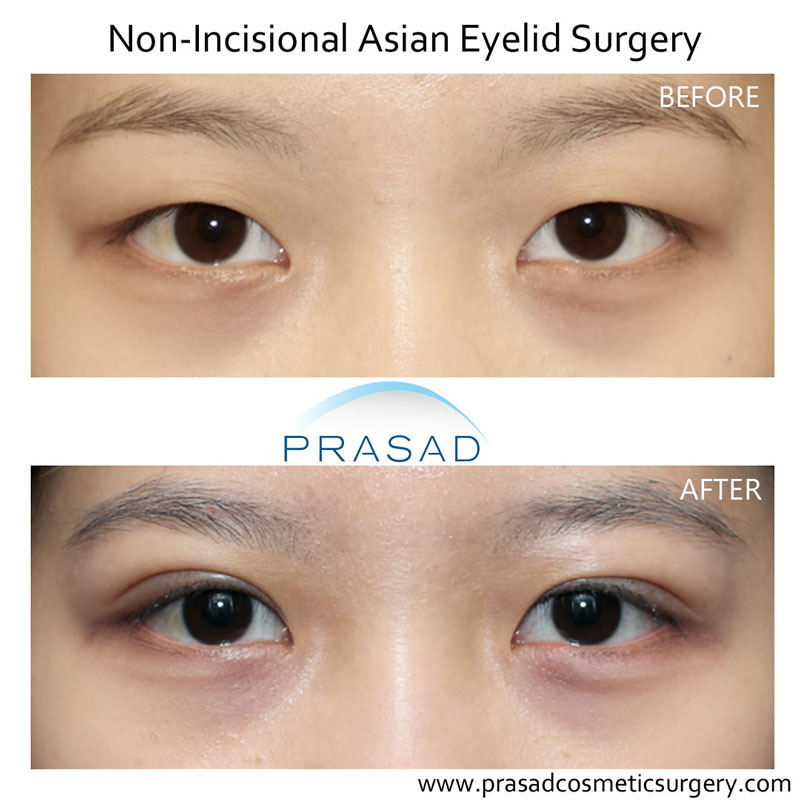
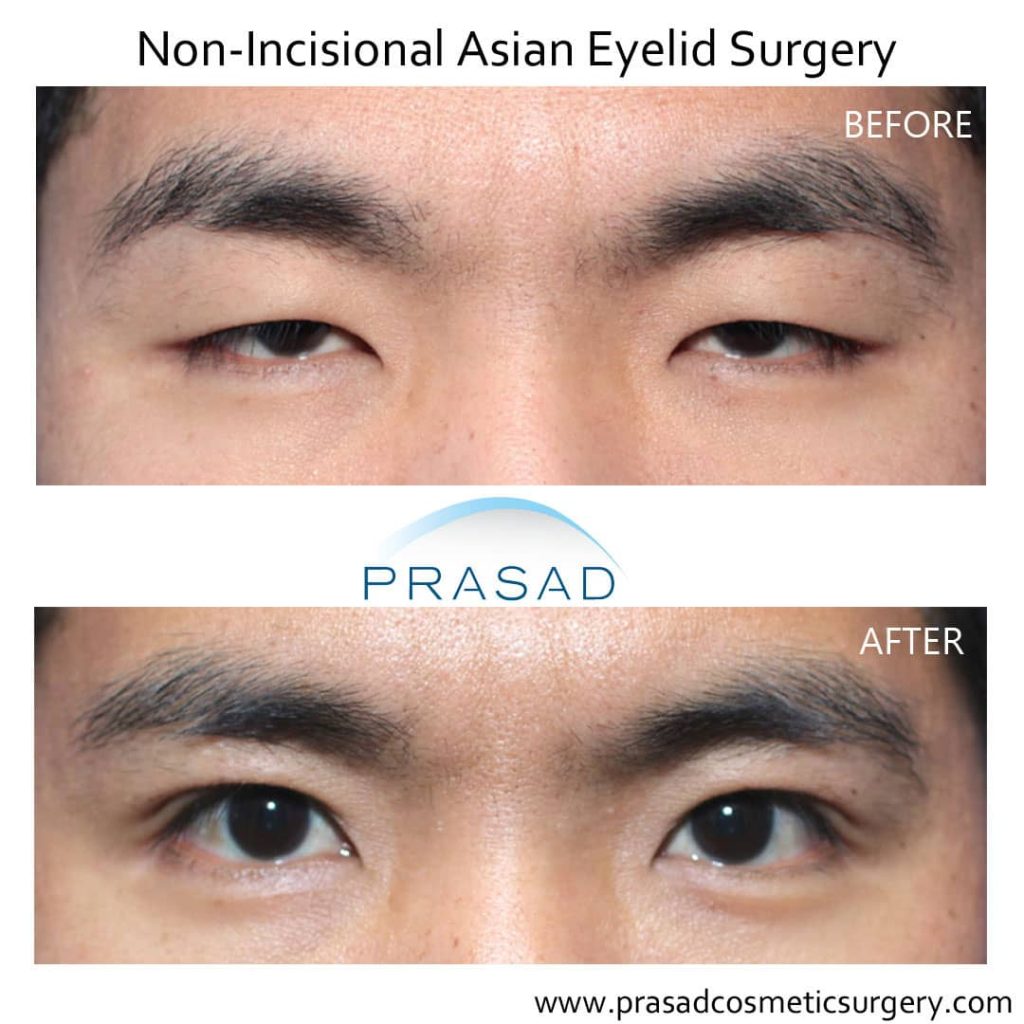
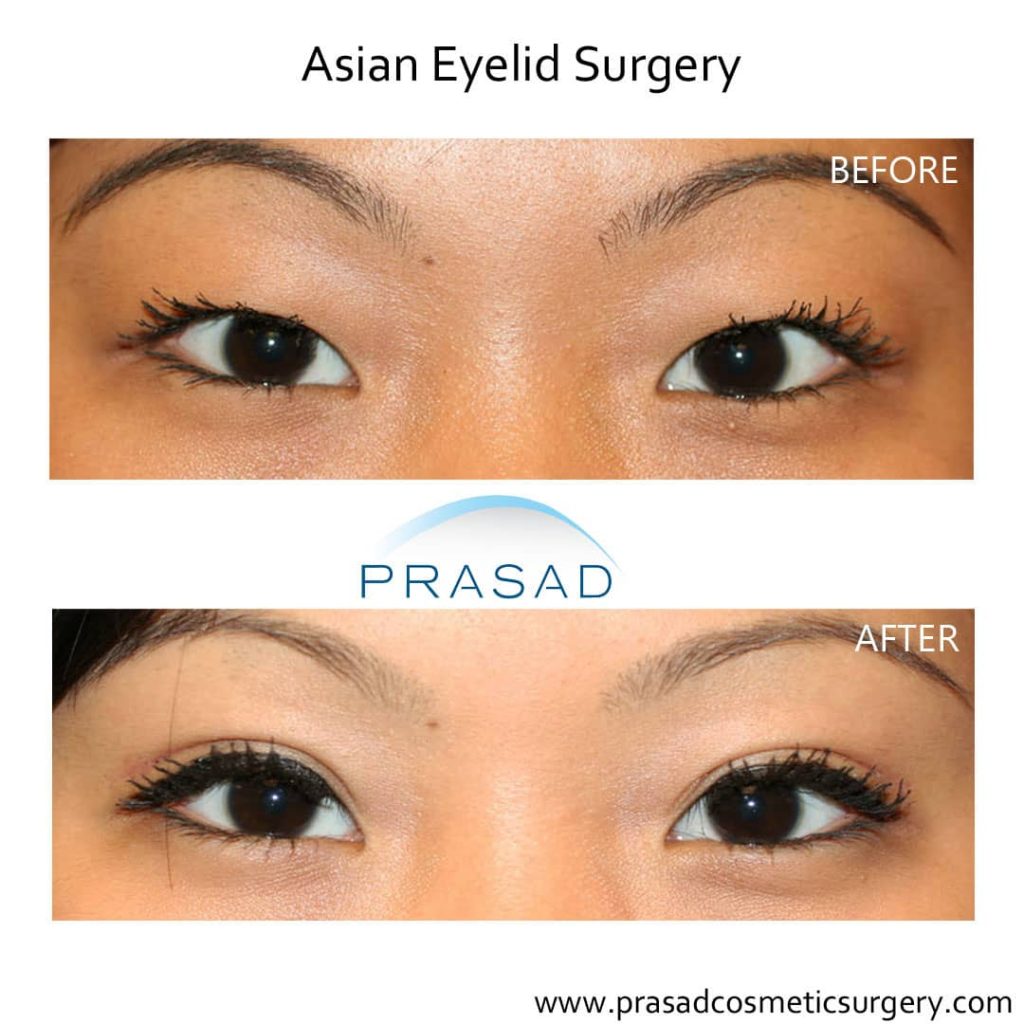
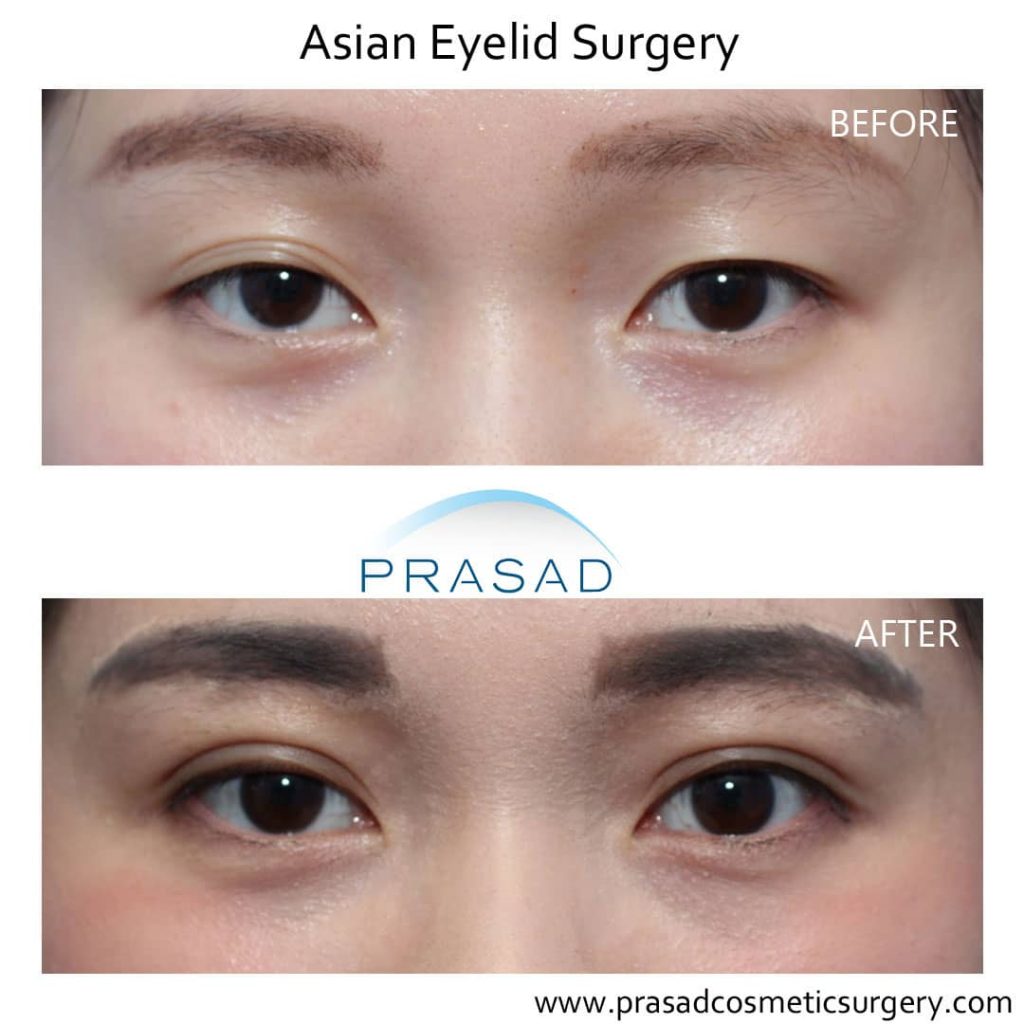
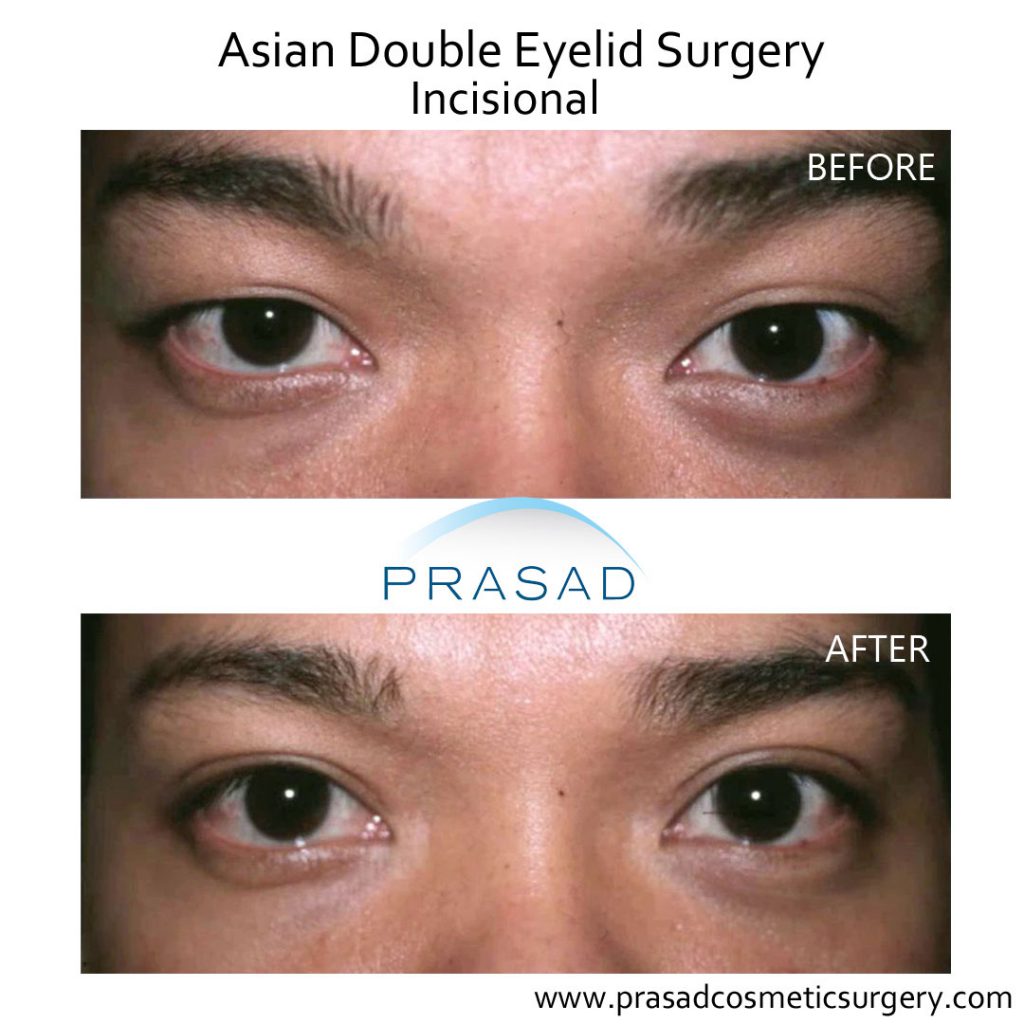
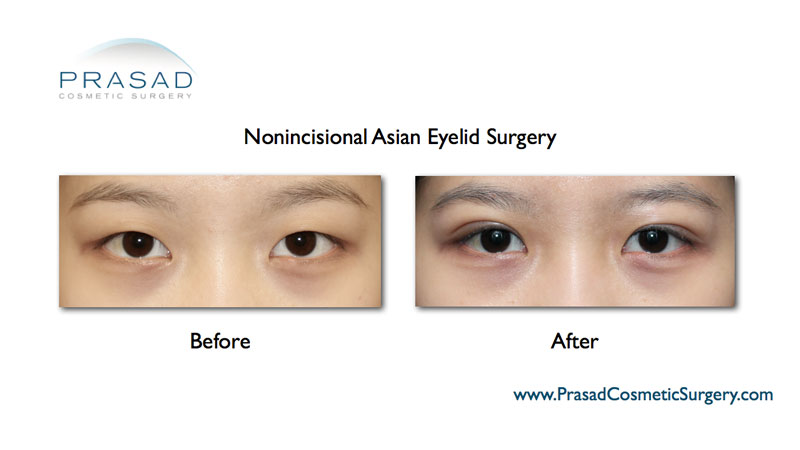
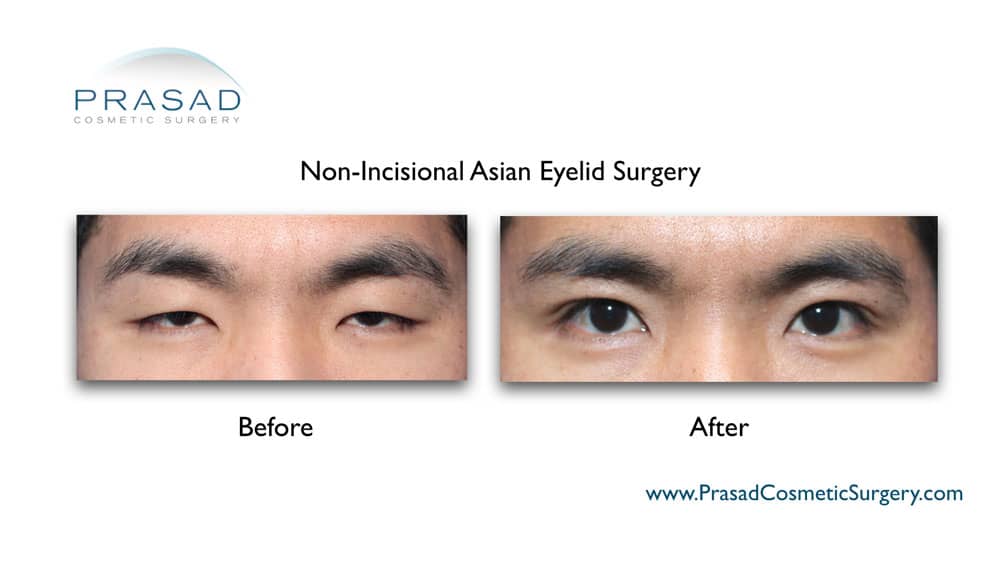
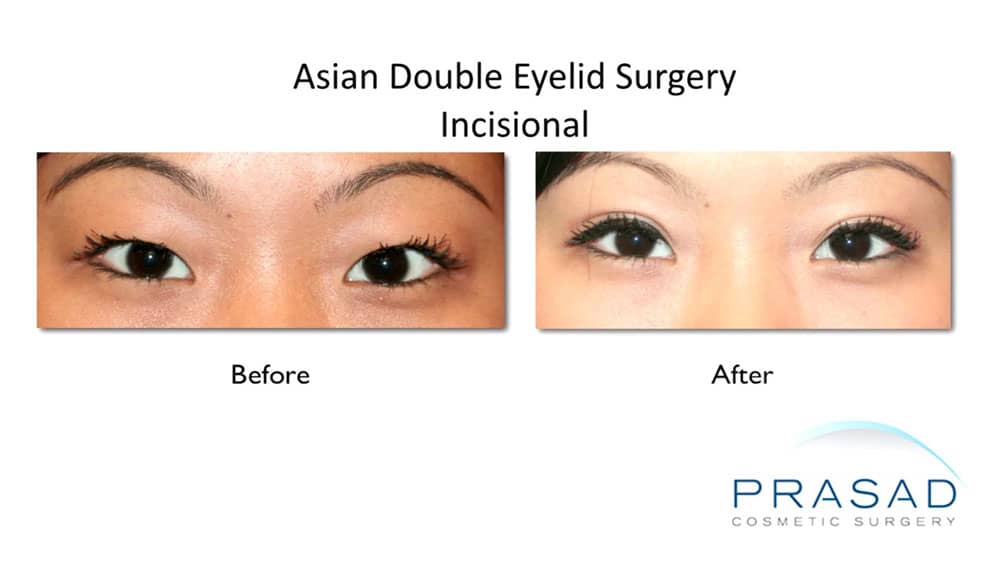
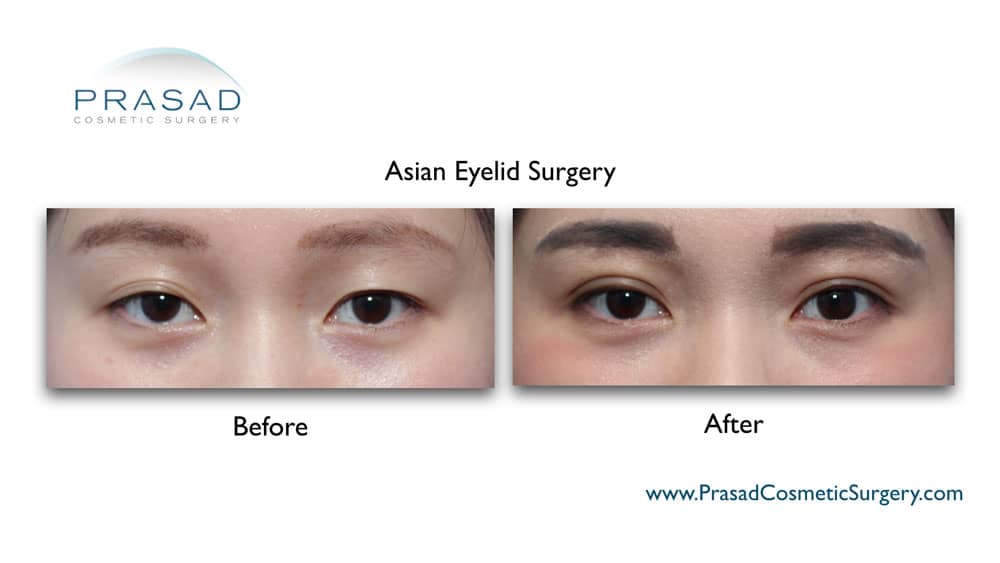
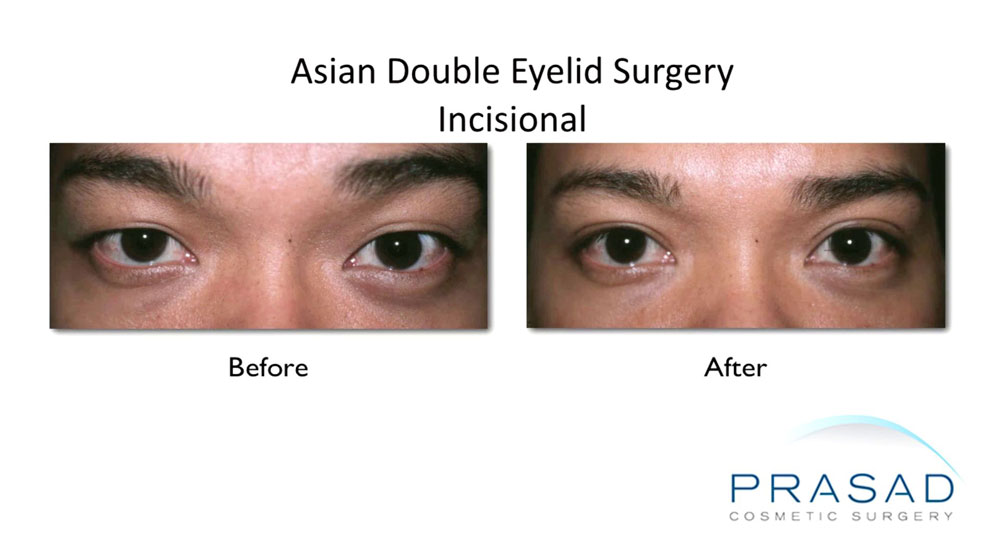
What is Double Eyelid Surgery?
Double eyelid surgery is a popular treatment among those of Asian descent. Only about 50% of Asians such as those of Korean, Chinese, or Japanese descent are born with an eyelid crease, also called a double eyelid. The other 50% either have no eyelid crease, which is commonly referred to as a monolid; or don’t have a deep and defined eyelid crease, but rather a shallow crease, or multiple shallow creases. The purpose of Asian double eyelid surgery, in general, is to create a defined eyelid crease where there wasn’t one before; or to create a more defined crease where there was a more shallow crease, or multiple undefined creases.
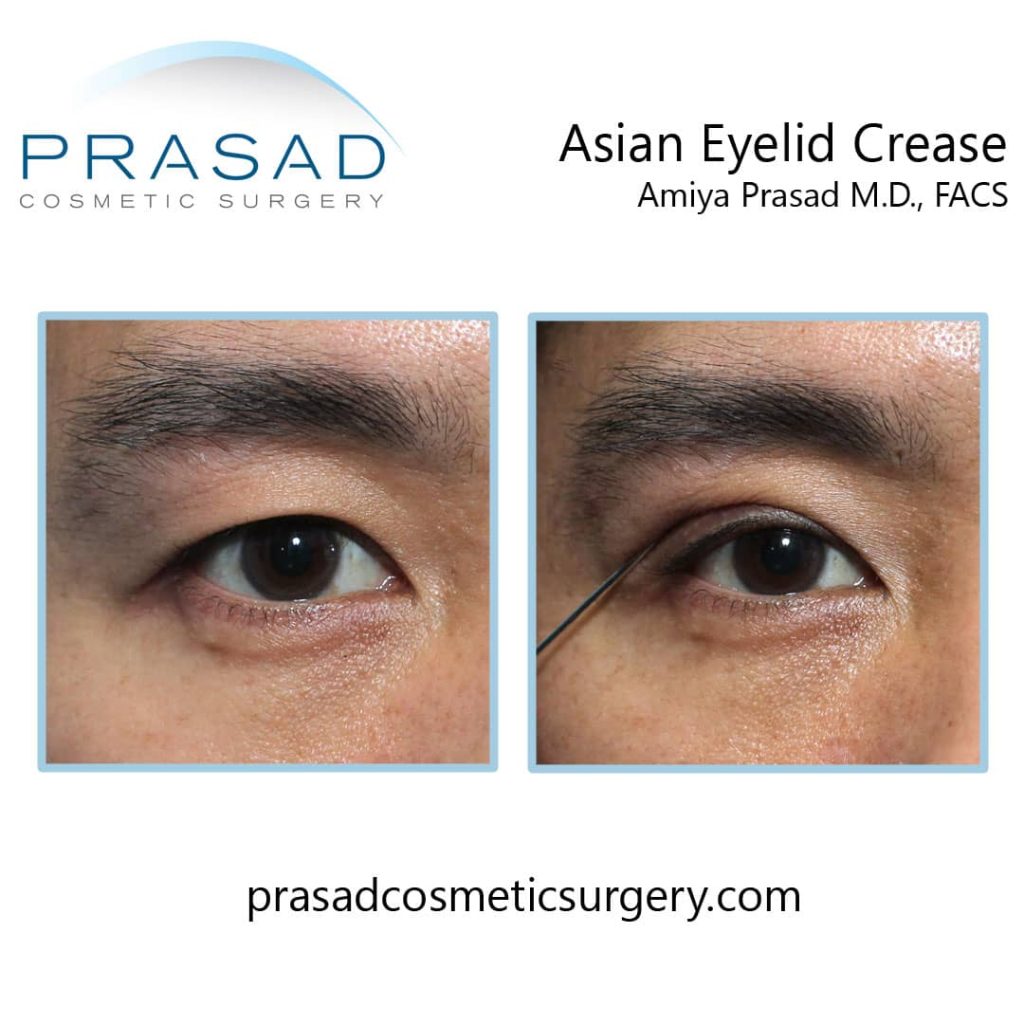
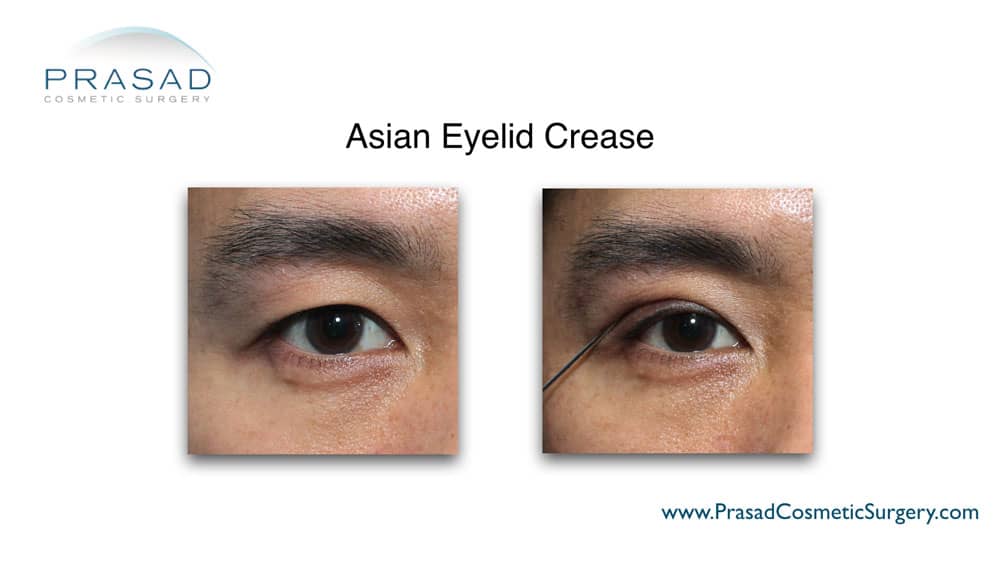
An eyelid crease is created with surgery by inserting a connection between the eyelid skin, and the muscle that lifts the eyelid called the levator muscle. A surgical connection is made by passing a suture through the eyelid skin and the levator muscle in both the non-incisional, and incisional approaches to Asian double eyelid surgery. The point where the skin and muscle are sutured together is where the eyelid skin folds when the eyes are open, so it’s because of this folding that a visible eyelid crease forms. Since surgery is needed for both approaches, with a suture passing through the skin and muscle, both approaches are invasive procedures. The term “non-incisional” may be confused with not needing surgery, but it still refers to a surgical procedure.
So what do non-incisional and incisional mean in the context of double eyelid surgery? As mentioned earlier, an eyelid crease forms at the connection between the levator muscle that lifts the eyelid, and the eyelid skin. With older people, fat that may have been pushed forward due to aging into the upper eyelid can prevent securing a connection between the skin and the levator muscle to create a stable, and well-defined crease. Therefore, before the skin and muscle can be sutured, the fat needs to be removed, which requires an incision at the upper eyelid to excise and remove the fat, hence the name incisional Asian eyelid surgery, or incisional double eyelid surgery. Older patients also have stretched or redundant eyelid skin, usually from the effects of aging causing skin laxity. The same incision used to remove the fat will also need careful measurement to trim the stretched or redundant eyelid skin to form a clean and crisp appearance of the upper eyelid.
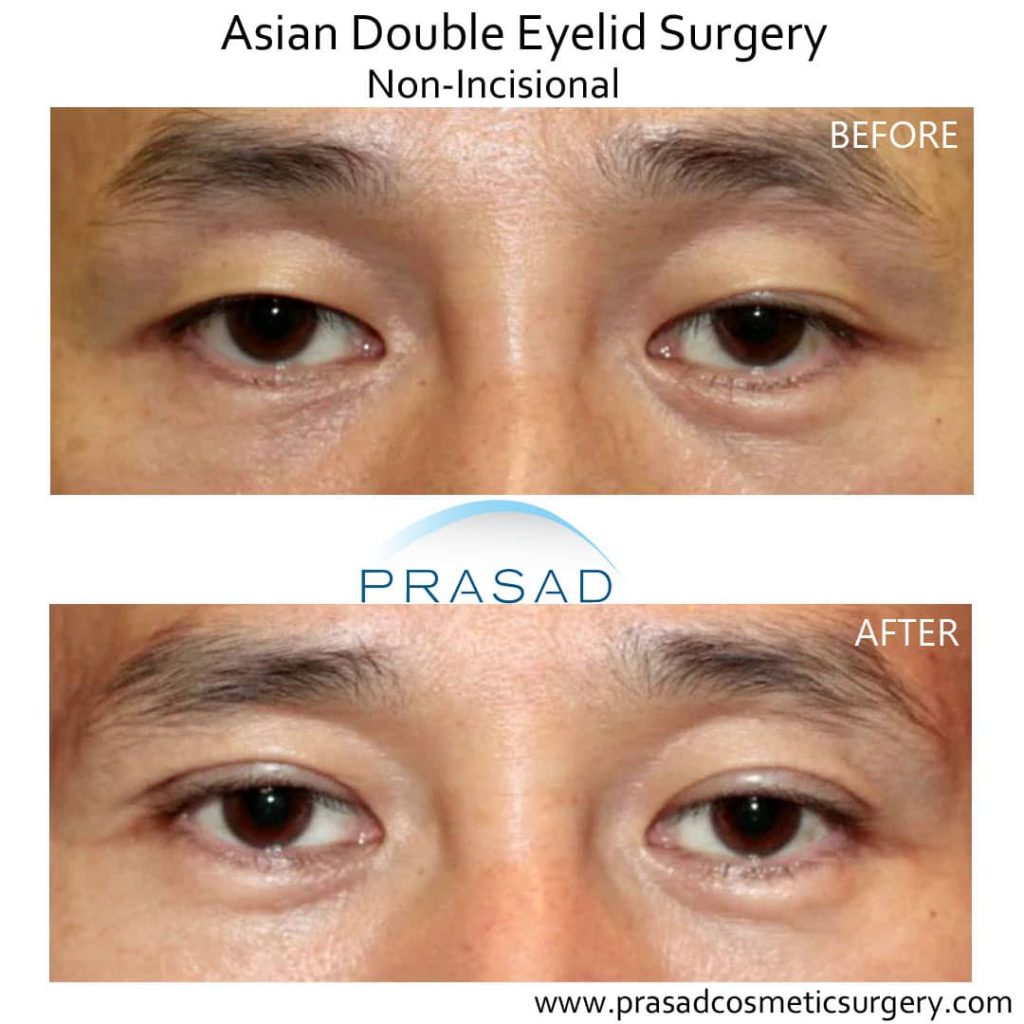
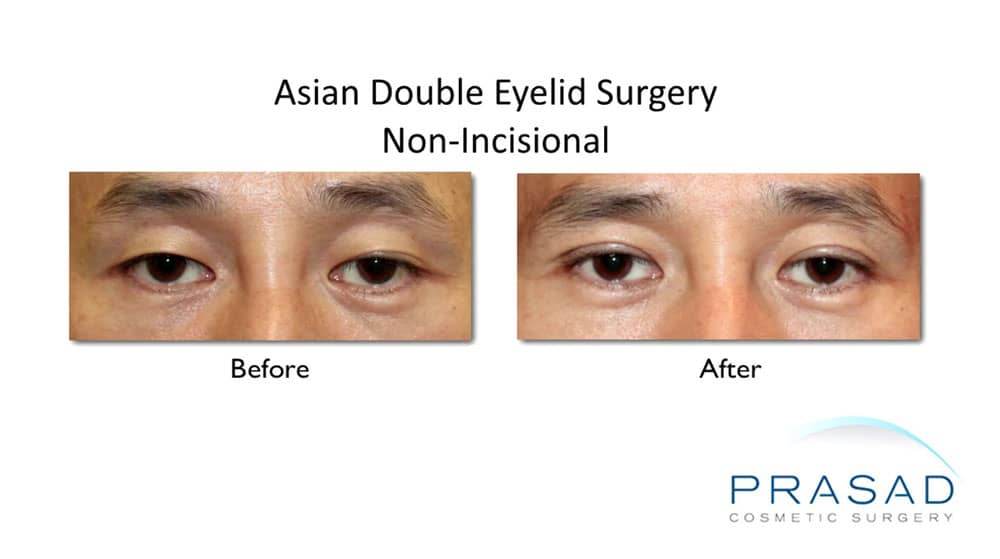
Younger people haven’t experienced skin laxity due to aging, and tend to have little to no fat in the upper eyelid. Since fat doesn’t significantly come between the eyelid skin and the levator muscle, younger people are more likely candidates for the non-incisional approach to Asian eyelid surgery. Since no fat is removed, or skin is excised from the upper eyelid, the non-incisional technique in double eyelid surgery doesn’t require a long incision along the upper eyelid. Instead of a long incision, small incisions in the upper eyelid to allow for a suture to pass through, to establish or strengthen the connection between the eyelid skin and the levator muscle. Just like the incisional technique, the crease forms at the line where the sutures pass through, as this is where the eyelid skin folds when the eyes are open.
So, to answer the question of whether one may choose the non-incisional approach to double eyelid surgery, is that the personal anatomy of the patient determines the approach, so it’s not an actual option. Someone with significant fat in the upper eyelid cannot have a non-incisional procedure because the fat prevents the connection between the eyelid skin and levator muscle, so fat needs removal with the incisional approach to enable the surgical connection. Removal of extra eyelid skin also requires the incisional approach as the extra skin can fold over and obstruct the crease. If a non-incisional approach was used with extra eyelid skin present, the crease that was created with the time and expense of surgery wouldn’t be fully visible.
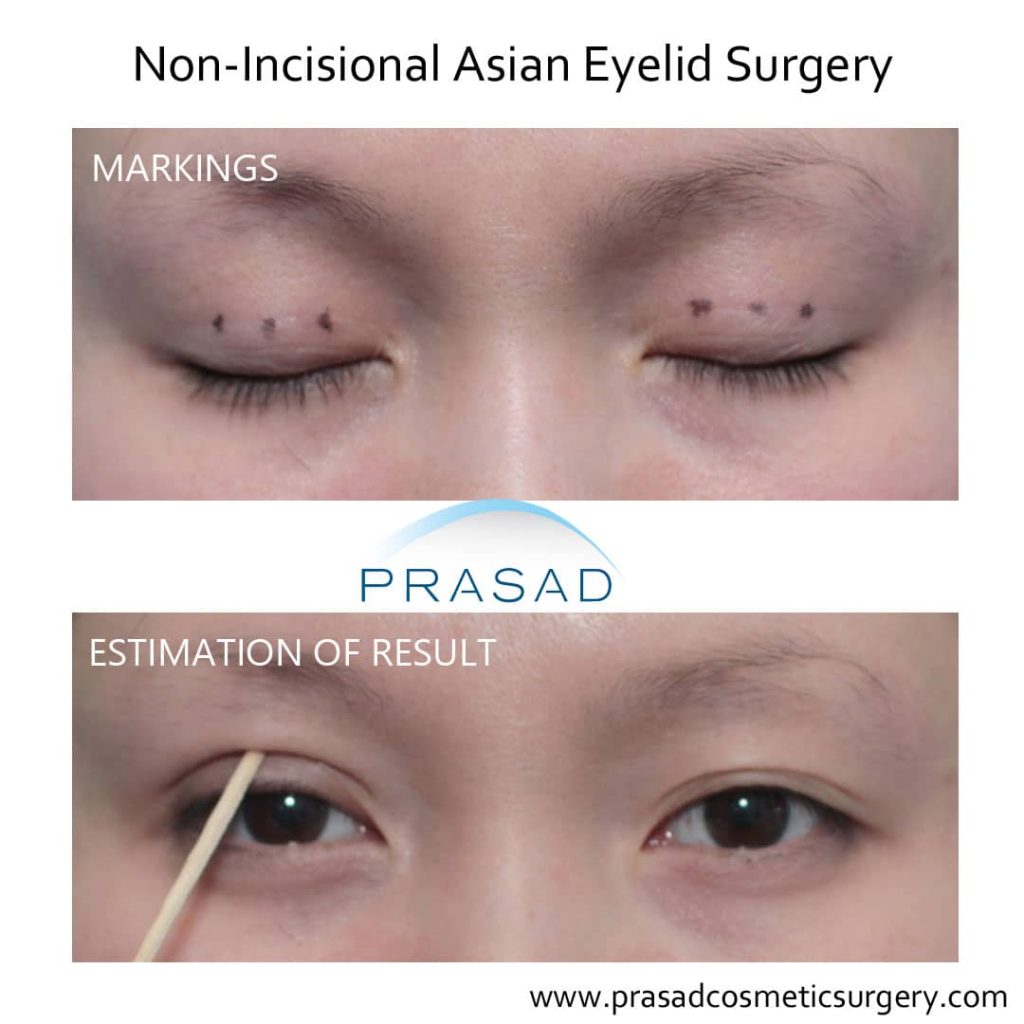
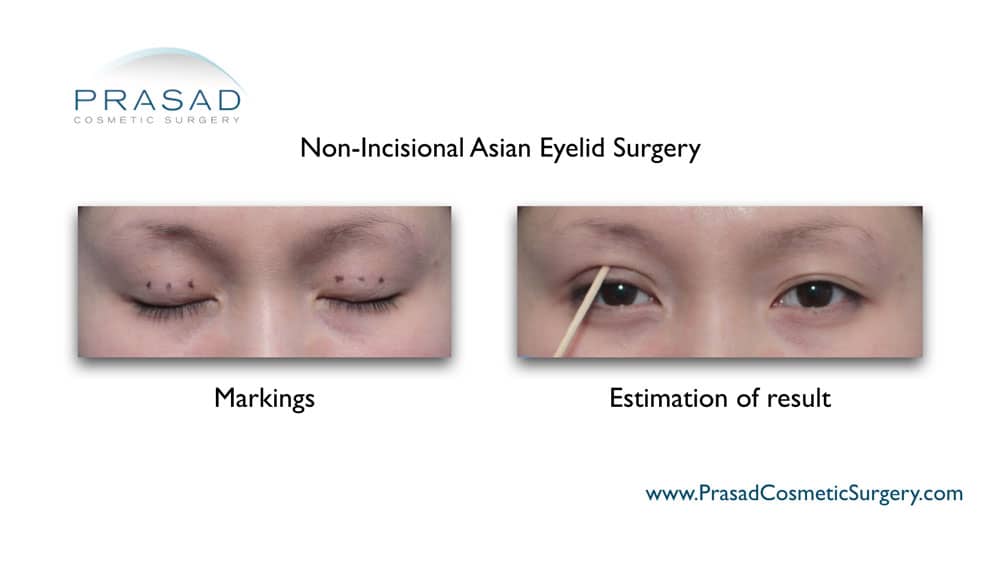
Whichever approach is suitable for a particular patient, individual anatomy also determines how the crease will look. Even in people who were born without an eyelid crease, there is still a shape and position where it would have naturally formed. I can show my patients a fairly accurate approximation of where it would have allowed the crease to form. I do this by using an instrument or a Q-tip to lift and roll the eyelid skin, and push the fat back enough to reveal the expected appearance of the crease after surgery. Seeing a projected result before surgery is an important part of the decision making process, with surgeons experienced with cosmetic upper eyelid surgery regularly showing the expected outcome.
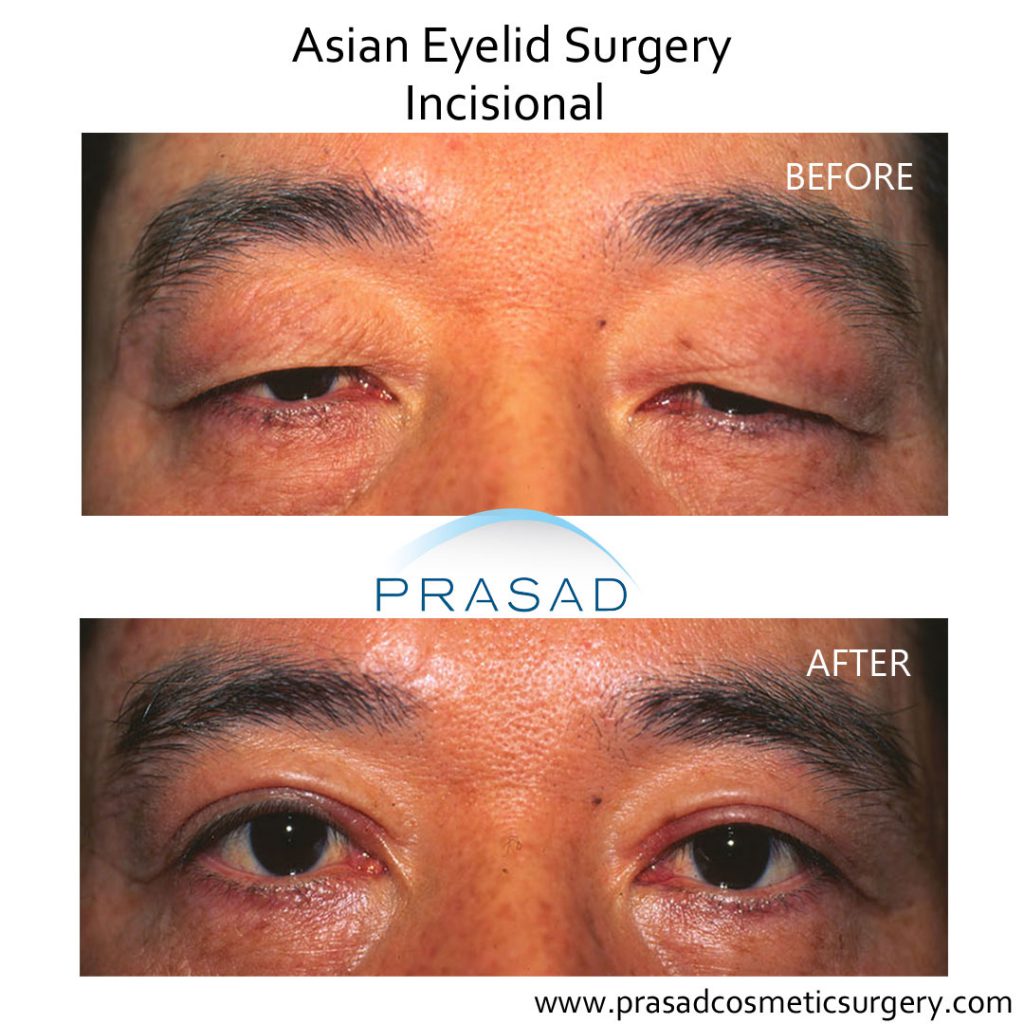
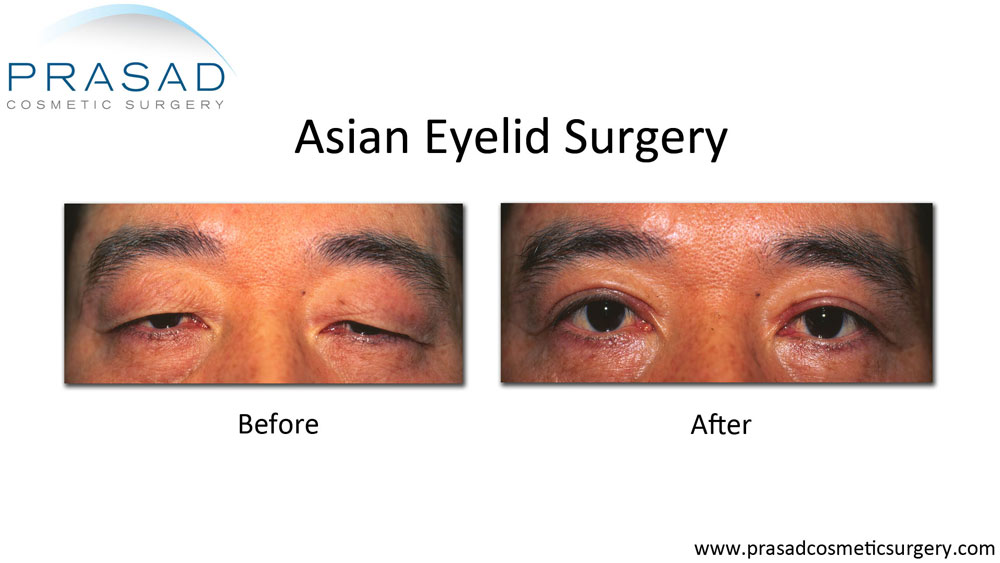
I perform both the incisional and non-incisional approach of double eyelid surgery using local anesthesia, with LITE IV sedation. Patients are completely relaxed, and in a twilight state of consciousness during surgery, as if they were sleeping, but are breathing on their own, and can be awoken if needed. This avoids the effects of general anesthesia such as nausea, needing an overnight stay after surgery, and delayed healing as recovery is needed after being under general anesthesia. We can observe the results of the double eyelid surgery while the patient is still in the operating room, sitting up to see the results of the eyelids with the effects of gravity, and being able to open and close their eyes.
Double Eyelid Surgery Recovery
Patients come back about a week after surgery for suture removal. The recovery protocol for the first two days is use of cold compresses 20 minutes on, and 20 minutes off during waking hours to reduce post-operative swelling, and antibiotic ointment at the incision only for the first two days to avoid an allergic reaction or contact dermatitis that can cause more swelling and redness. After the first two days, warm compresses are used to clear fluid around the eyes, and a petrolatum-based ointment like Aquaphor placed at the incisions to create moist conditions ideal for healing. For the incisional double eyelid surgery patients, they come back about a week after surgery for removal of external sutures. Some incisional patients, as well as all non-incisional patients, have internal sutures that are permanent and not removed. While temporary post-operative swelling can linger for a few months, our Asian eyelid surgery patients generally experience less swelling, and many look pretty close to their final results in 10 days to 2 weeks after surgery.
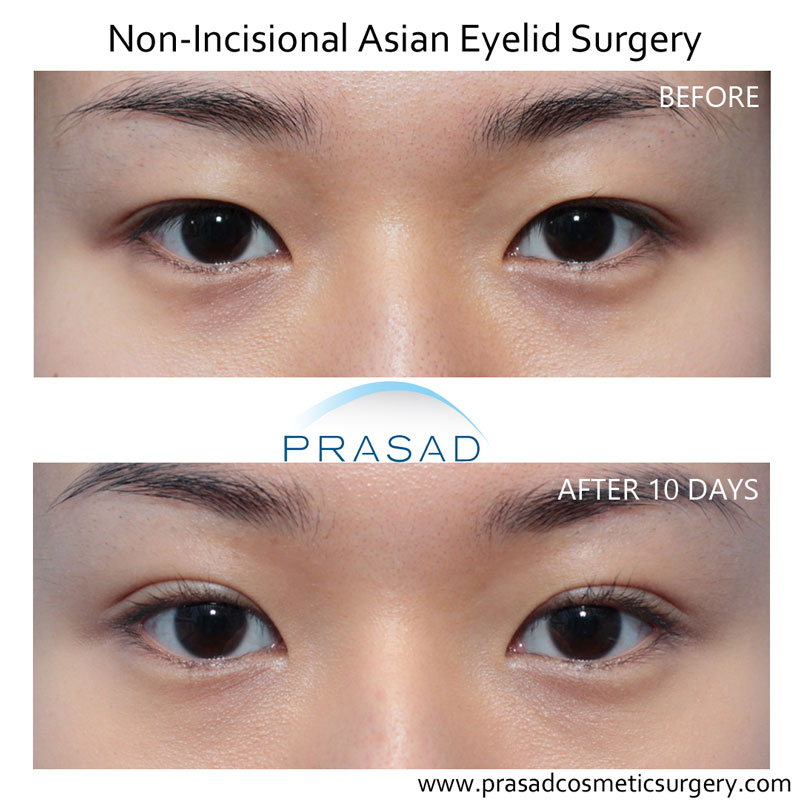
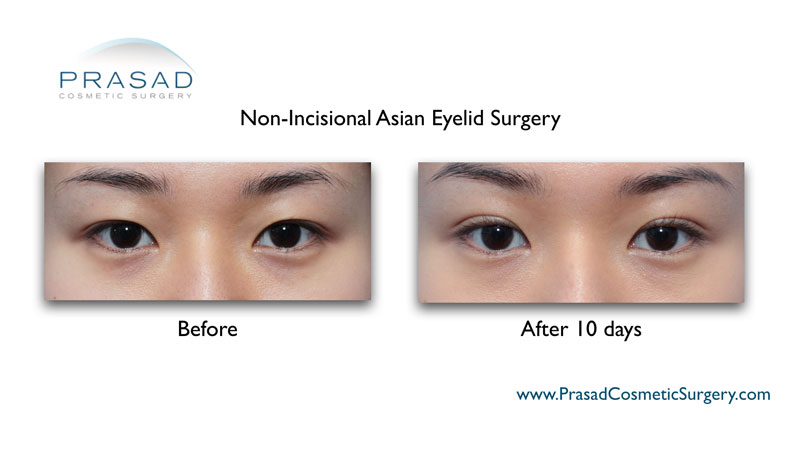
For some of our other patients, swelling can take longer to resolve, but most swelling does dissipate after the first month as disorganized collagen fibers start to flatten, with swelling gradually dissipating for around 3 months. Our patients look pretty close to their final result at about 6 months after surgery, with full surgical healing taking about a year.
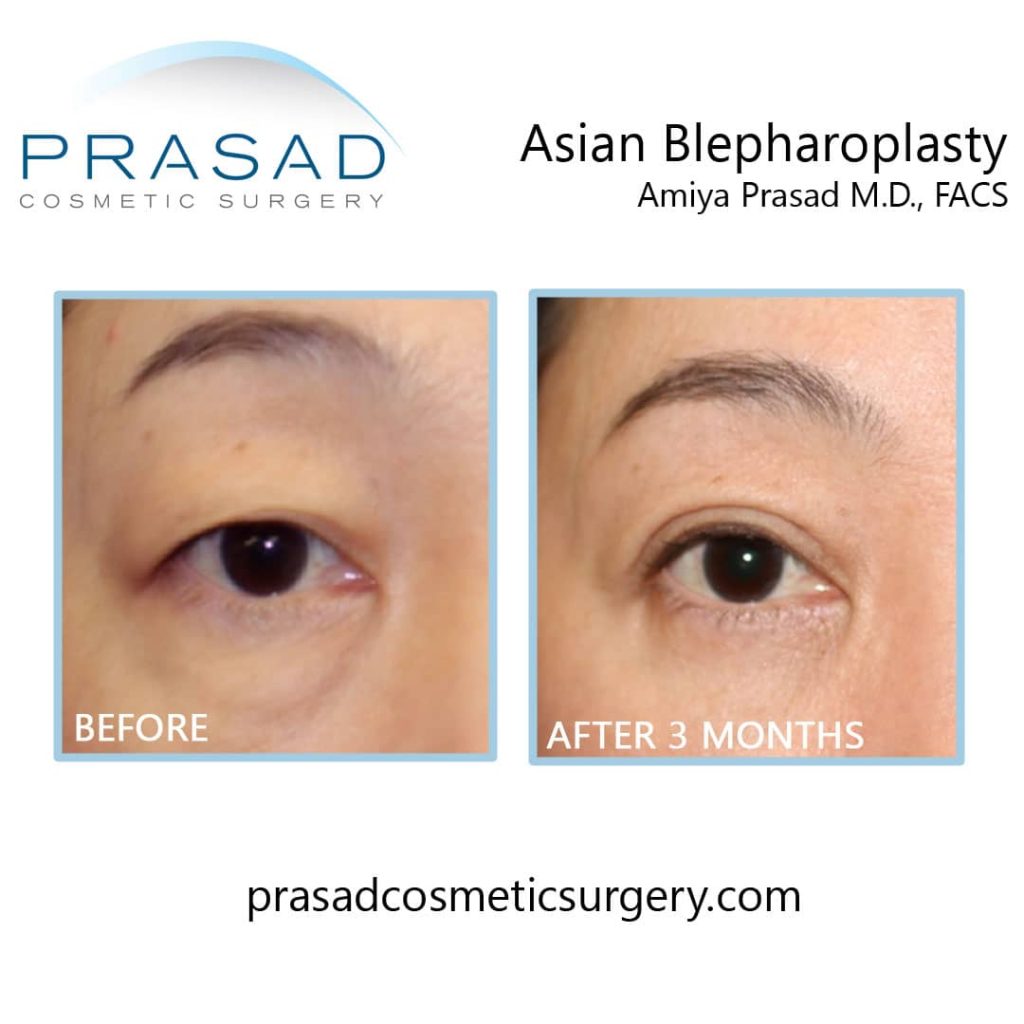
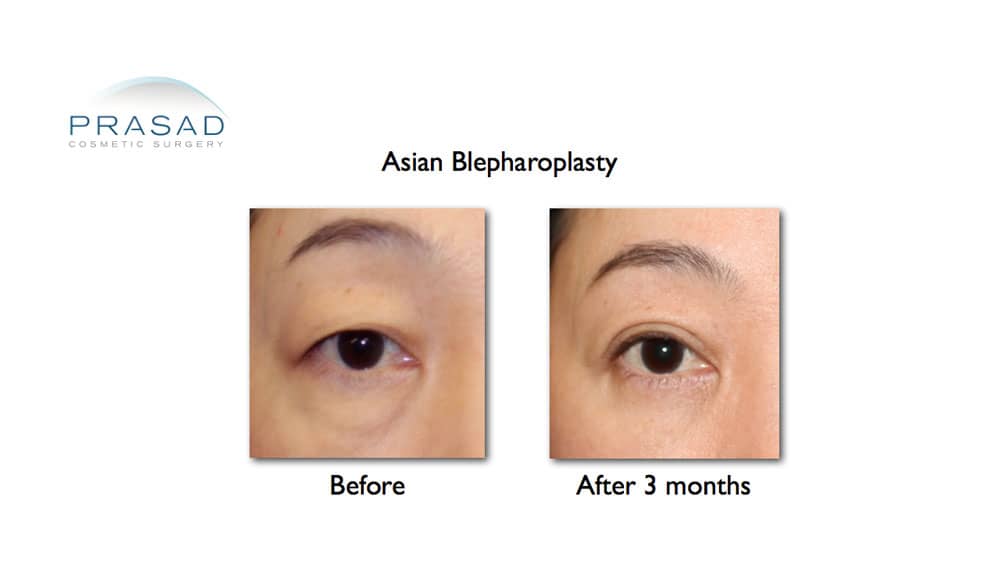
Incisional and Non-incisional Double Eyelid Surgery NYC and Garden City
When considering Asian double eyelid surgery, an open mind is needed as your anatomy, as well as age are factors that determine whether the incisional, or non-incisional approach is best suited for you. It’s important to find an experienced and skilled surgeon who knows the anatomy of Asian eyes well, and leave your trust with your doctor to choose the ideal approach. It’s also important for the surgeon to clearly explain which approach will best help you reach your aesthetic goals, and show you how your new eyelid crease will likely appear, even before your surgery begins.
